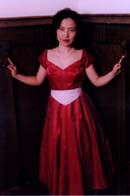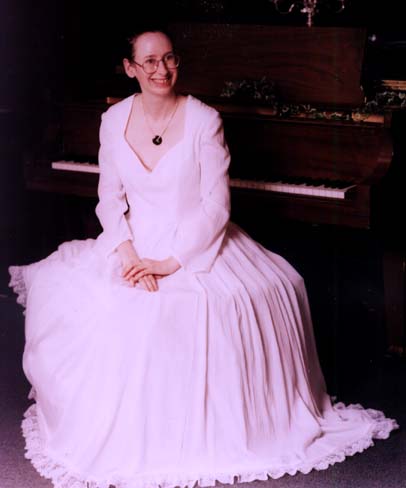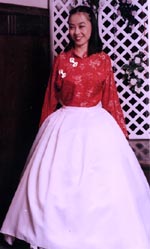




















![]()

| Laurel A. Rockefeller | [email protected] | cell number: 908.720.7050 |
![]() Laurel A. Rockefeller
Laurel A. Rockefeller![]()

Pc Essentials For Beginners
Except from Chapter One
Now you know not to call your CPU a computer, what the heck is it really? The name is a reference to the core of the machine: the central processor. The processor is that little chip you’ve heard so much about on the Intel commercials. The processor is truly the heart of the system. If your processor chip doesn’t work, nothing else will. You can think of it as the brain of the machine. Like your brain, all the information in your system will flow through it. The processor directs all the activity within your machine, telling this information to go to this place and that information to go to another. Your processor makes all the pieces of your system work together, helping everything to communicate.
But there’s much more to it than just the little chip (often a Pentium brand) that directs it all. Inside the box you’ll find a MOTHERBOARD which is the big flat circuit board that everything plugs into. The processor sits on the motherboard under a fan to keep it cool. Next to that you’ll find the power supply—which is the little part that takes the electricity from the power cord and distributes it to wherever it needs to go. You’ll also find slots for the different cards or DEVICES that you may plug into the computer like a modem, video card, or sound card. The motherboard is also where you’ll plug in the FLOPPY DISK DRIVE (A DRIVE) which is used for the 3.5 inch disks you’re probably familiar with and the CD ROM drive. CD ROM (ROM stands for Read Only Memory) drives now come in four different types as of the time of this book’s publication.
The first type of CD ROM drive is your regular CD ROM. It looks like a regular cd player, but is used for computer programs—though most will also play music cds if you have the right software. The second type of CD ROM drive is called a CD-R drive. This stands for CD-wRitable. This means that the drive can burn disks from material on your computer. Disks that are burned on a CD-R are PERMANENTLY burned—you cannot change the data on the cd disk once it’s there. By contrast, CD-RW which stands for CD-ReWritable can burn data onto a special, more expensive format of cd and then erase that data and burn again on it—just as you would for your floppy disks.
Essentially you want a CD-RW if you have very large files that you want to keep on a disk, files that exceed the size found on a regular floppy disk and want the option of erasing them later. Examples would include programs and photographs. Website backups are most appropriately done on CD-RW disks because files on sites are often updated and changed frequently. However if you don’t need to erase and/or replace the data, you should be fine with a CD-R—which will let you burn something permanently onto a cd disk. If you don’t need or cannot afford either of those, then of course the standard CD ROM will do the trick. The CD ROM standard version is ESSENTIAL to your CPU—the other two formats are optional extras you might choose or add on to your system.
The other type of CD drive is the DVD drive. This is essentially the same as a regular CD ROM drive but it will let you play DVD disks. You want a DVD drive if you either don’t have or don’t want to purchase a separate DVD unit for viewing movies. In terms of your computing needs, DVDs haven’t shown themselves to be as useful as the other three, more standard options.
When you buy your computer, the default or standard type of CD drive you’ll receive is the regular CD ROM drive. If you want one of the others, make sure you ask your retailer and tell the salesperson that’s what you want. And if you start with a standard CD ROM and want to upgrade or add on another of the options later, that’s no problem. Many stores will gladly install your new HARDWARE (physical mechanical part of a PC) for a fee.
THE KEYBOARD is perhaps the most intuitive part of your computer and probably the least complicated and most straight forward part of it. Your keyboard is that rectangle shaped hardware with the letters of the alphabet on it. Your basic keyboard will have a row of FUNCTION KEYS (F1, F2, F3, etc) to the right of the ESCAPE (ESC) key. Beneath that on the left is the main set of keys with the alphabet plus some extra ones like BACKSPACE, TAB, ENTER, SHIFT, CTRL, ALT, and probably the START key.
To the right of the main keys you’ll see a group that includes INSERT, HOME, PAGE UP, PAGE DOWN, DELETE, and END. Below that will be four arrow keys. Lastly, most keyboards have a NUMBER PAD on the far right which includes 0 to 9 plus the symbols for addition (+), subtraction (-), multiplication (*), and division (/). These keys will have more uses than simply for math, as you’ll find out in later chapters, but it’s good to know that if you cannot find them in the regular set of keys, you’ll find them repeated on the number pad.
THE MOUSE/TRACKBALL/TRACKPAD is used to interface or communicate with your computer in the Windows environment. Like the keyboard, it is an ESSENTIAL INPUT device—meaning that you use these to put information into your computer. Most mice are plugged into the PC, though some wireless devices exist now. For more information on wireless device operation, you’ll need to talk to your sales representative at the store—here, we will talk about the standard connections.
SPEAKERS are considered a PERIPHERIAL or optional output device. They are used for sending sound out of your CPU and to your ears. They work in a computer exactly the same as they do with your stereo—just plug them in, turn on the power, and you’re set to go. SOUND CARDS are used within the CPU to increase the range of sounds your computer can produce. Sound cards are installed into the CPU the same as the video cards and the sounds produced by them will come out your speakers.
Okay, so you now know what is in the box—what now? You hook it up, of course!!
Though this may already be done for you, sooner or later you’ll need to unplug everything and put it back together. And though every CPU is different, there are some tips and tricks to putting the computer back together easily.
READ THE INSTRUCTIONS seems obvious, but it may just be your lifesaver as you put together your system. Read the diagrams if you’re buying a new computer or ask your sales representative if you’re buying a system that doesn’t include instructions. The better you know the instruction manual for your system, the faster you’ll be able to locate components and attach them properly. In addition, you’ll be aware of safety hazards that you might otherwise miss.
MATCH SYMBOLS. Computers aren’t for the professional anymore and computer makers understand that they are trying to sell to people who know nothing or almost nothing about computers. They have learned that the easier it is to put together, the more likely people will buy it. Because of that, most if not all computers made in the year 2000 and later will have a SYMBOL on the back of the computer that matches what plugs into it. These symbols are called ICONS—they represent something else. In the case of computer hardware, the icons look like what it is you want it for. For example, an icon of the monitor is probably where you plug the monitor into, the keyboard symbol is where the keyboard goes, and the mouse icon is where the mouse/trackball/trackpad plugs into.
TRY AN ADAPTOR if the hardware won’t plug into the designated place on the CPU. For example, some mice come with USB connections instead of the round, PS2. The former is a special type of connection that some hardware has places in the back for. The PS2 is more universal and is probably what you’ll see for most things. Most of the time, the hardware will either include an adapter or the store you bought it from will sell them. This is very important if you are replacing older, worn out parts of your system with something newer. If it’s a completely new system with everything included, odds are you won’t need any adapters. But if you do, don’t think you have to throw something away—the answer to “it won’t go in” is often an inexpensive little plug in adapter, most costing less than $10 each!
ASK QUESTIONS is one of the best pieces of advice out there, not just for attaching your CPU to the rest of your system, but for anything computer related. If you don’t understand something, then consult the manual, talk to your sales representatives, call customer service and technical support numbers as provided to you. The only dumb question is, after all, the one that is never asked.
Now the PC is hooked up you’re going to have to know what you actually have so that you can buy the peripherals that work with your system. By peripherals I mean all those other hardware devices that you plug into your CPU to expand it’s capabilities—things like speakers, printers, webcams, scanners, and the like.
The first thing you will need to know is the type of Processor chip you have. My best friend, a systems analyst at UMDNJ, just taught me this one in late August, 2001. I made the mistake of buying a computer from my former employer at CaGiMa without knowing the processor and that lack of information has been devastating.
To that that information, you will need to hit F1 during the booting up process—right after you turn on the power in your computer. If you are already booted up, just hit the reset button or CTRL ALT DELETE to restart the computer. Do it in the first 5-10 seconds after you see anything on the screen. The key might also be ESC, but whatever key you strike right away, the computer will say “hit ___ to enter setup.” You want to enter setup. Now look at the menu you are given. It will either be under the main menu or “advanced” as it is on mine. Just arrow over to it and hit enter/return. Now look on the list in front of you. You will see an item that lists a processor speed. That’s your chip. Write down that speed. A 166 MHz will be a Pentium I processor. The larger the number you see there, the faster your computer is and the more information it can handle at once. A Pentium III will be from 866 MHz to 1.0 GHz. A Pentium 4 will be from 1.3 GHz to 1.7GHz. A GHz is 1000 times faster than a MHz—so a very fast Pentium 4 is nearly 2000 times faster than a Pentium I!
Once you know the processor, you can go ahead and let the PC boot up. Now click on My Computer icon (read further to learn how to use your mouse, but bookmark this page) with the right button. Choose PROPERTIES. It will then list how much RAM you have, what percentage of space on your hard drive is free, and other key information. If you find your PC has less than 25% free, you will either need to do a massive cleanup of your PC or you’ll need to add in a second, larger hard drive—replacing a hard drive that is working is not recommended because your hard drive has all your programs and files on it. Unless you have no other choice and have to lose that data (usually because of a hard drive crash), don’t replace the hard drive. Most computers have space in them to add another hard drive, so if you don’t need to upgrade otherwise and want to keep this computer—add a hard drive if you can.
Excerp Windows unit, chapter One:
Four Major Windows Functions
So here you have this powerful operating system that uses icons…now what? What are some basic, simple things you can do with windows that has nothing to do with the software you might add on in your system?
You can:
· Customize the appearance of the screen
· Make use of helpful applications like calculator, phone dialer, notepad, paint that are built into windows
· Install hardware and software
· Manage your files and disks
Let’s learn how to do each of these things:
1) From control panel, select display
2) Use tabs to get to precise options, select option desired
3) hit apply or okay to activate and put changes into effect
For example, one great display feature you can customize is called the WALLPAPER. This is the background image for your screen. You can download wallpapers from the internet, use the defaults that come with windows, you can even take a favorite photo and convert it into a wallpaper.
Another great customizable feature is the SCREENSAVER, which is a program that runs when your computer is idle so that the monitor will not burn out from being turned on continuously.
Though not on every computer, another display option you can download easily from the internet is called a THEME. Themes are great fun and change all the icons in your windows environment along a thematic line. For instance, a star trek theme would turn the cursor into the starship enterprise, the MS World icon into a computer pad, and the recycle bin into a phaser—or something similar.. Next time you or your family turns on the net and surfs, try searching yahoo or similar engine for themes that you can download and make your computer look exactly the way you want.
--Insert source disk to appropriate drive
--From control panel, select add/remove programs.
--Click INSTALL to add a program
Note that often you must restart your computer for changes to take effect
Applications Built into Windows
To reach each of these applications simply:
1. Click on start or hit the startup key on the keyboard
2. Highlight PROGRAMS with the mouse or through arrow keys
3. Highlight ACCESSORIES and follow the drop down menu to the desired function
Calculator: the calculator lets you do simple math functions by either striking number and symbol keys or clicking on the numbers in the window.
Notepad: The notepad lets you write and save text files with very limited formatting options.
Wordpad: The wordpad lets you write and save text files with somewhat limited formatting options
Imaging: A basic image editing application for photos.
Paint: A basic image editing application that allows you to draw pictures as well as edit photos.
| Laurel A. Rockefeller | [email protected] | cell number: 908.720.7050 |










![]()
